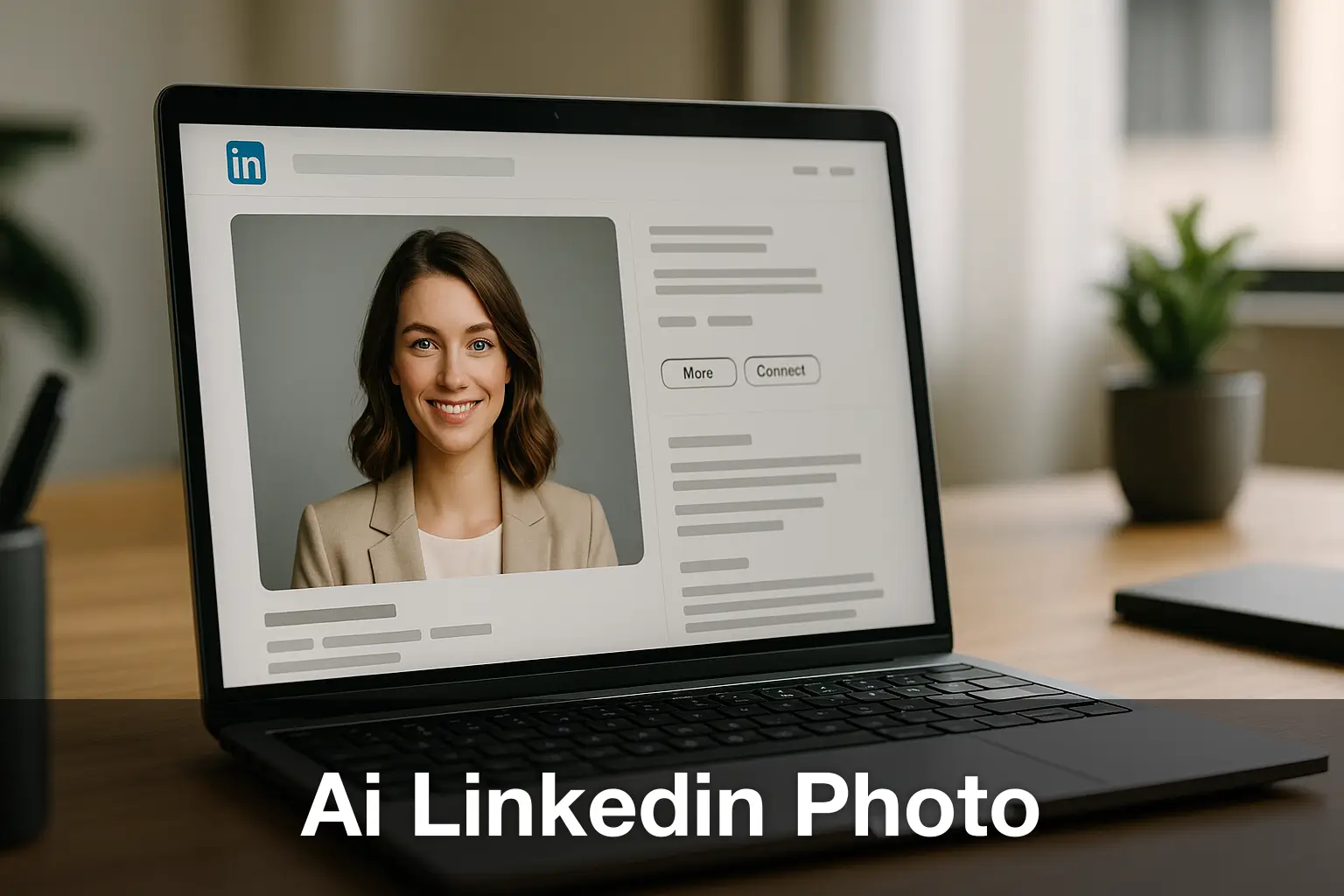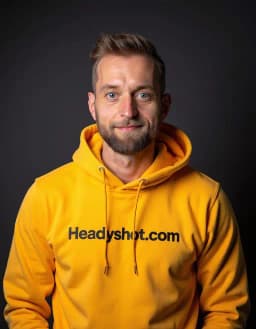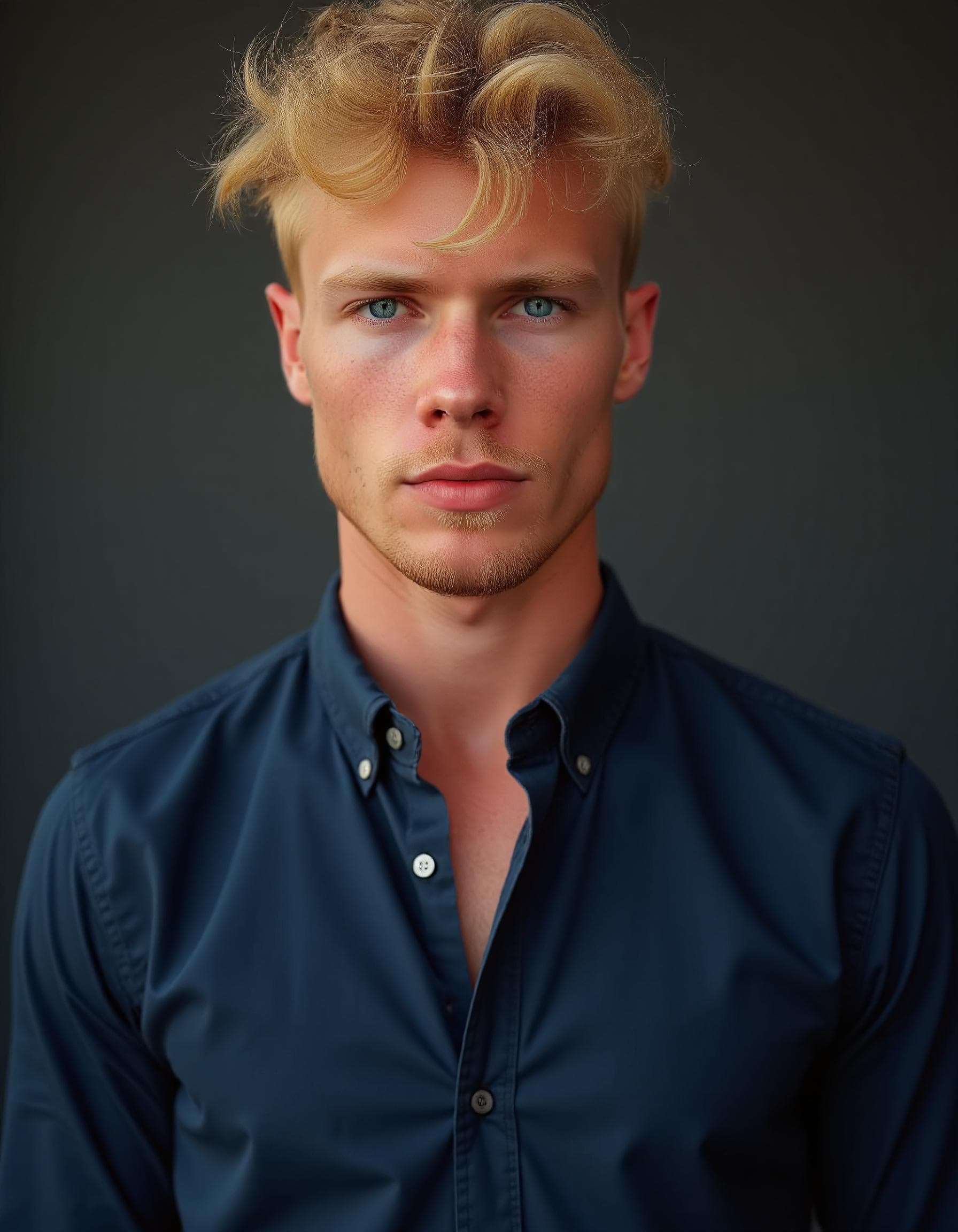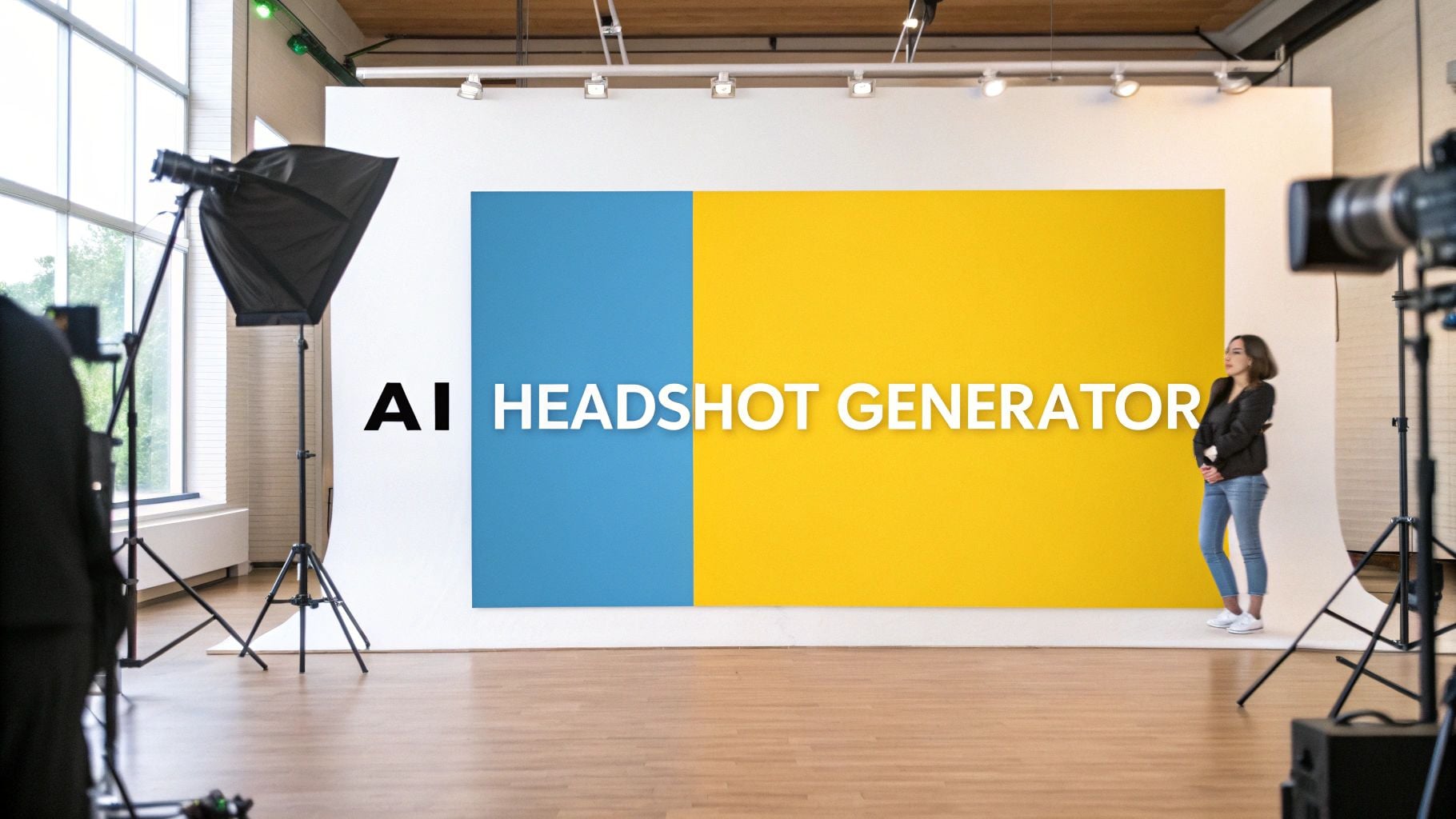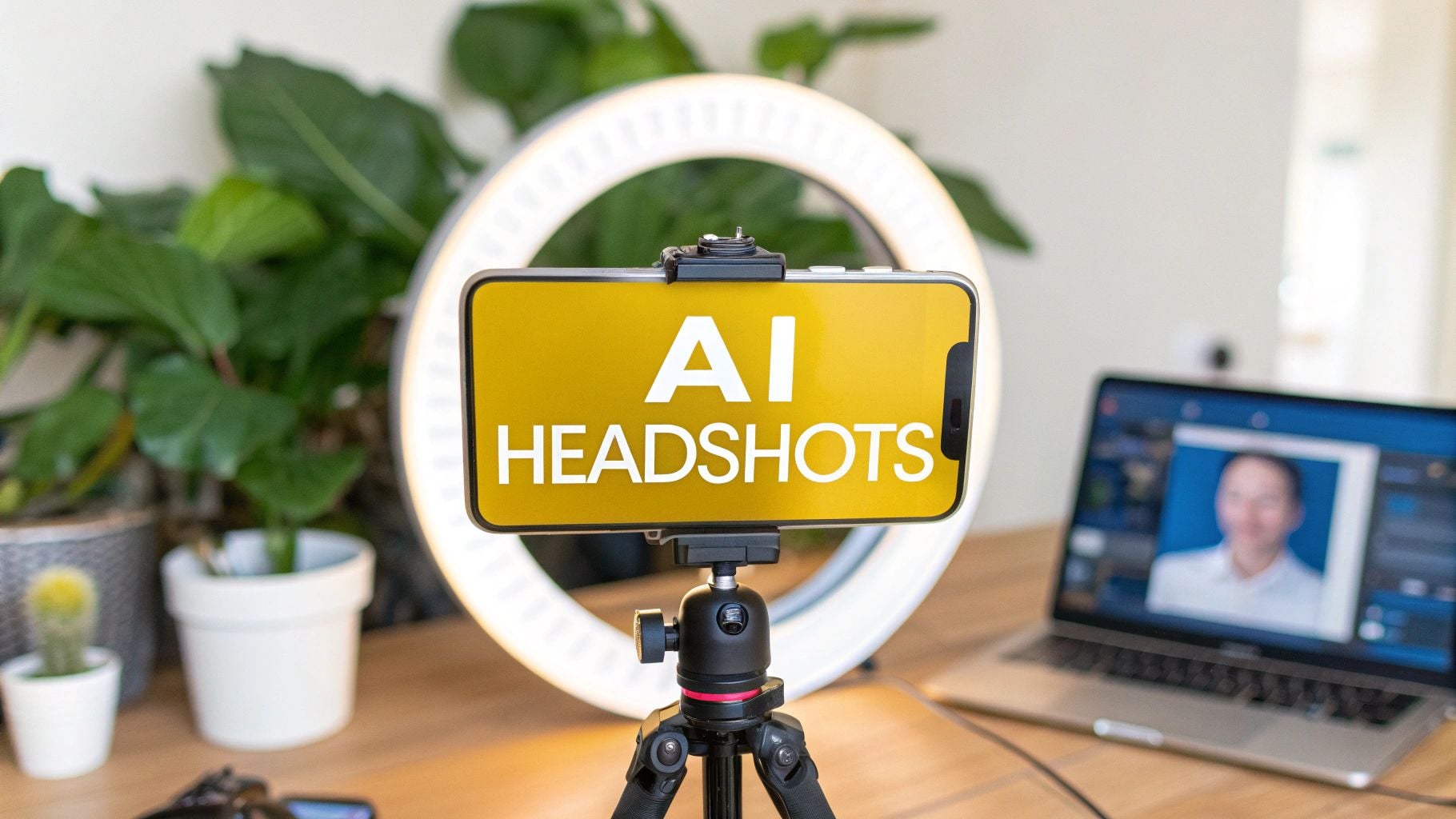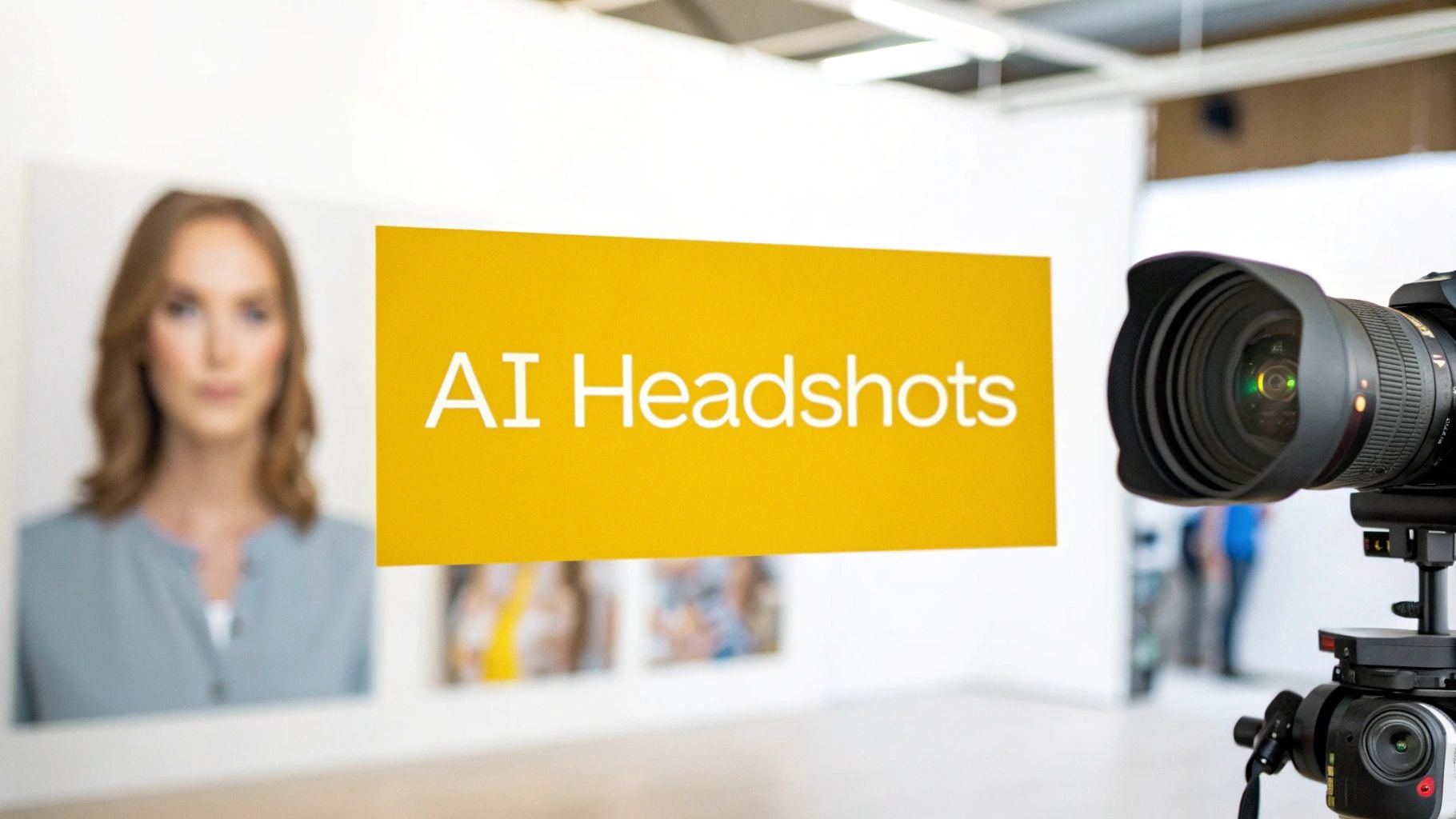Most people decide whether to click “Connect” in seconds. LinkedIn has reported that profiles with a photo get far more views and connection requests than those without—your picture isn’t decoration; it’s a filter. Now add one more shift: more of those photos are generated with AI. Why? Because getting a professional shoot takes time, money, and a bit of luck with lighting and posture. An AI LinkedIn photo (sometimes called an AI headshot or LinkedIn headshot generator) closes that gap quickly, but only if you know how to steer it.
This article demystifies the process. You’ll see what a professional AI portrait actually looks like, where it goes wrong, and practical steps to make one that fits your role. We’ll compare tools and help you choose an approach that aligns with your brand, timeline, and budget. The goal isn’t to look different—it’s to look like the best, most trustworthy version of you. Ready to upgrade your first impression?
AI LinkedIn photo: what it is, why it matters, and who benefits
An AI LinkedIn photo is a headshot created or refined by artificial intelligence specifically for your LinkedIn profile. Instead of booking a photographer, you feed a set of selfies or existing portraits into a model that generates new, professional-looking images in consistent styles (studio, corporate, editorial) with clean backgrounds and flattering lighting.
Why it matters is simple: your headshot anchors your first impression, which directly affects how recruiters, clients, and partners interpret your profile. Research shows people form split-second judgments about trustworthiness and competence from faces alone. On a platform that thrives on skim-reading, your photo is a credibility shortcut.
Who benefits?
- Job seekers who need a presentable image now, not later.
- Freelancers and consultants who want a look that matches their positioning (approachable expert, creative strategist, technical partner).
- Small business owners who need consistent, on-brand portraits across websites, decks, and team pages.
- Remote teams that want uniform staff headshots without coordinating multiple photoshoots.
AI also helps address real-world constraints—tight budgets, limited daylight, or lack of access to a photographer—while producing a cohesive result you can reuse. Used well, it’s not about perfection; it’s about clarity, authenticity, and speed. Done poorly, it can look uncanny and undermine trust. The difference lies in your inputs, style choices, and editing discipline.
What makes an AI LinkedIn photo look professional
A professional-looking portrait - whether created by a photographer or an AI profile photo tool - balances technical quality with human warmth. It’s a mix of flattering light, accurate color, confident posture, and subtle editing that supports your story—not a glamour filter that tells a different one.
Professional doesn’t mean glamorous. It means believable at a glance.
Lighting, color, and dynamic range that flatter faces
Good lighting is 80% of the battle. You want a soft key light (real or simulated) that shapes the face without harsh shadows. Think “window light at 10 a.m.” rather than “phone flash at midnight.” AI can simulate softboxes and controlled environments; your job is to choose references that signal clarity and depth, not glow-in-the-dark plastic skin.
Color matters just as much. Aim for natural skin tones with a hint of warmth. Overly cool images feel clinical; orange casts feel dated. Dynamic range—the balance between highlights and shadows—should retain detail in hair and facial features. If highlights are blown out or eye sockets are murky, the image reads as low quality even if you can’t say why.
Consistency seals the deal: pick one lighting style and keep it across the images you publish. This creates a brand feel even if the images were made across different days or apps.
Pose, expression, and eye contact that signal trust
Micro-expressions drive perceived warmth and competence. A slight smile softens edges without tipping into a yearbook grin. Keep your shoulders open to the camera with a gentle 10–20° turn—square enough to signal confidence, angled enough to add depth. Direct eye contact generally performs best on LinkedIn because it feels engaged and straightforward.
What about wardrobe, background, and crop? Choose clothing you’d actually wear to a client call. Solid colors beat busy patterns; mid-tones beat stark white. Keep backgrounds simple: a soft studio gradient, a tasteful office blur, or a muted brand color. Crop to head-and-shoulders with a bit of breathing room above the head; don’t crowd your chin into the frame. If a stranger can describe your role based on the image alone, you nailed it.
A clean portrait is a clear promise. If it looks like you on your best workday, you’re in the right zone.
Best AI LinkedIn photo examples (and why they work)
Seeing great portraits helps you reverse-engineer the look you want. In each example, notice how lighting, expression, wardrobe, and background work together to communicate role fit.
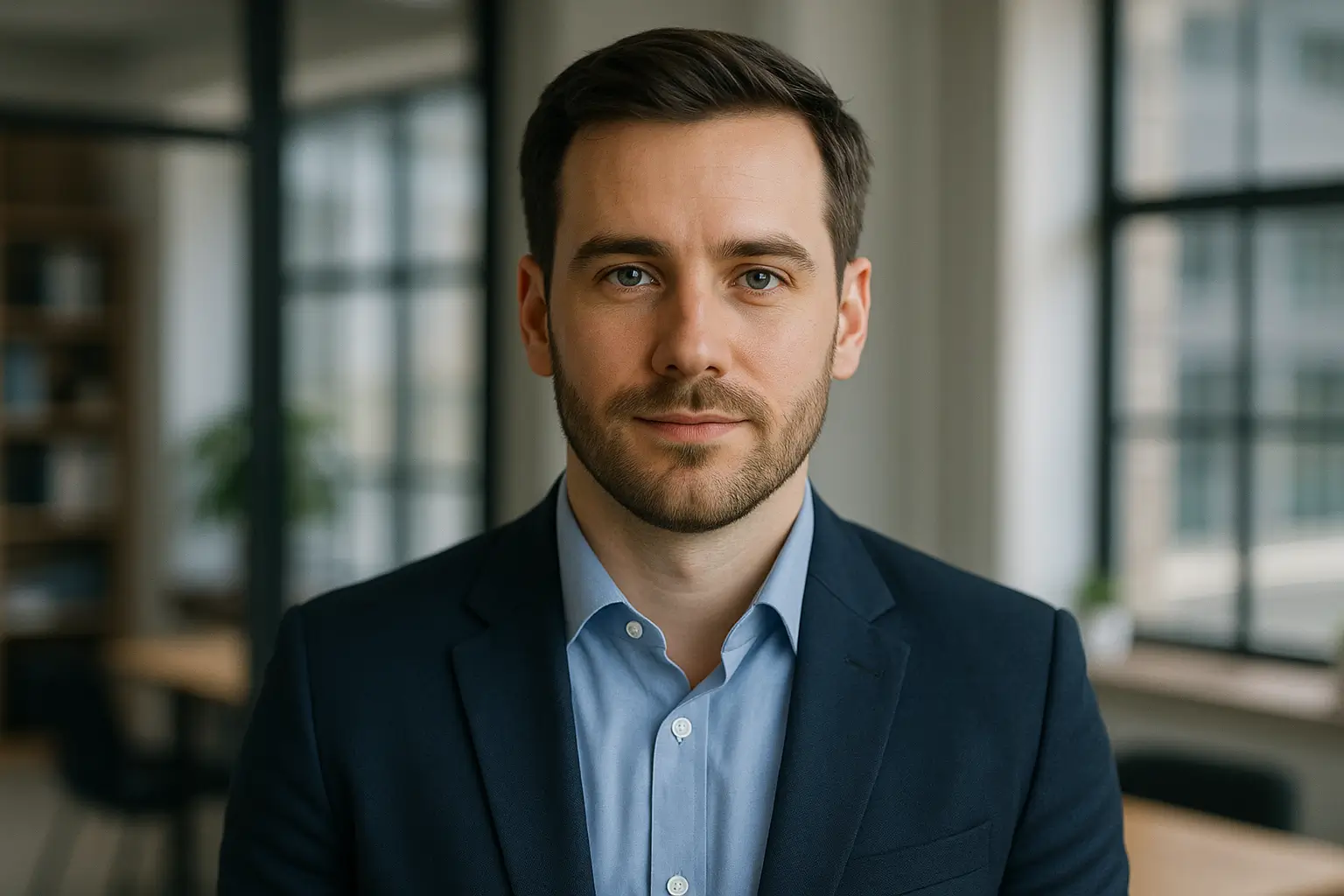
Corporate roles: consultants, analysts, managers
Picture a management consultant: navy blazer, crisp light-blue shirt, and a subtle smile. Lighting is soft and directional, with a gentle highlight on the cheek and catchlights in the eyes. Background is a desaturated office blur—recognizably professional but not distracting. The crop sits just below the shoulders, which reads as confident yet approachable. This works because every element supports a high-stakes, detail-oriented role without shouting.
Another corporate scenario: a product manager in a charcoal knit with no jacket, signaling modern but serious. The background uses a soft gradient that nods to the company’s brand colors. The expression says, “I can walk you through the roadmap,” rather than “I’m selling you something.” When your face, clothes, and backdrop pull in the same direction, trust follows.
Creative roles: designers, marketers, content leads
A creative director might wear a black crew-neck with a slightly brighter background wash—sage, teal, or coral—to hint at creativity while remaining tasteful. In one campaign we analyzed, a senior designer switched from a moody smartphone selfie to a clean, AI-refined portrait with softer light and a subtle colored backdrop. Over the next 30 days, their profile views rose by 34% and inbound coffee chats doubled. The takeaway isn’t that color equals clicks; it’s that clarity invites curiosity.
Where do entrepreneurs and SMB owners fit? They sit between corporate and creative. A founder can wear a blazer over a tee, keep a friendly smile, and use a background that nods to their industry (muted warehouse blur for logistics, neutral studio for SaaS). The image should say “approachable authority”: I’ll get on the call, and I’ll get it done.
AI LinkedIn photo mistakes to avoid (what looks unnatural)
AI can polish your presence—or trip the alarm bells. The fastest way to lose credibility is to look like a brittle, plastic version of yourself. Here are the pitfalls that most often break the illusion.
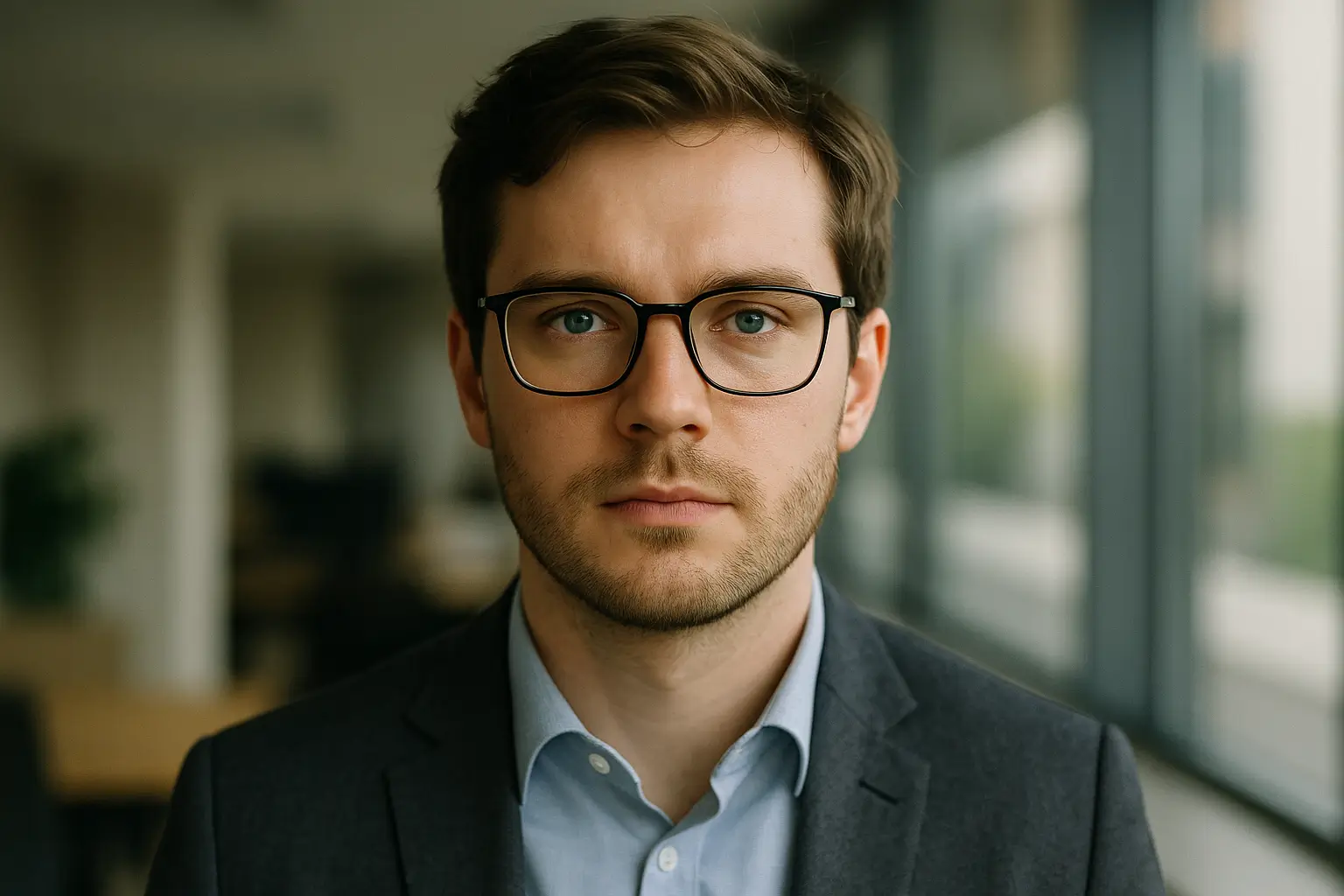
Skin, hair, and eyewear artifacts: uncanny giveaways
Over-smoothing turns living skin into vinyl. Pores and subtle texture should remain visible; stray hairs are fine, but melted hairlines are not. Watch glasses closely: AI often misreads reflections, duplicating frames or bending temples unnaturally. If teeth glow like LED strips or lips look airbrushed, dial the retouching back.
A simple test: zoom to 100%. Can you see natural grain in the skin? Are eyebrows distinct hairs, not painted arches? Do glasses have believable reflections and consistent geometry? If not, regenerate or switch tools.
Proportions, symmetry, and background warping
Faces are asymmetrical in real life—that’s okay. AI sometimes overcorrects, producing perfectly mirrored features or subtly stretched jaws. Ears can migrate; collars can melt; earrings can duplicate. Backgrounds can warp around shoulders, especially with bokeh effects. These are small tells, but once noticed, they’re hard to unsee.
Brand and style mismatches are the quieter mistake. A litigation attorney with a neon gradient is sending mixed signals. A startup founder in a tux feels performative. Think of your industry’s visual language and stay within the credible range. Personality is great—just keep it legible.
If it doesn’t look like you on a normal day, your audience will assume the rest of the profile is inflated too.
How to create an AI-generated LinkedIn headshot (step-by-step)
You don’t need to be a designer to get a strong result. You need a handful of good inputs, a clear style target, and a willingness to iterate.
Prep: choose references, wardrobe, and brand cues
Start with 10–20 clean selfies taken in natural light. Vary angles slightly; avoid sunglasses, hats, or extreme makeup that could confuse the model. Choose 2–3 reference headshots from people in your role whose images you admire. Note specifics: background color, jacket vs. no jacket, level of smile, head tilt. If your personal brand includes colors, identify them by hex (e.g., #0E76A8 for LinkedIn blue) and keep them muted in the background.
Clothing is your role cue. For corporate, lean into blazers or collared shirts in mid-tone neutrals. For creative, consider a simple knit or tee in black, charcoal, or a brand accent. Consistency beats trendiness. If you’re preparing for job applications in the DACH region, check out our German guide on Bewerbungsfotos mit KI for more context.
Generate and iterate: prompts, settings, and selection
Pick a tool that supports style control and multiple outputs. Feed your selfies per guidance, then set a style like “studio-lit, soft key light, neutral background.” If the tool accepts prompts, keep language descriptive rather than flowery: “head-and-shoulders, natural skin texture, subtle smile, catchlights, professional studio portrait.” Generate batches of 12–24 portraits and shortlist 3–5 that immediately look like you.
From there, iterate. Ask the tool to vary background hue within a narrow band (e.g., slate to soft blue) and to adjust crop slightly. Reject any image where the hairline melts, ears drift, or glasses distort. Don’t fall in love with a picture that doesn’t look like you in real life—future meetings will break the spell.
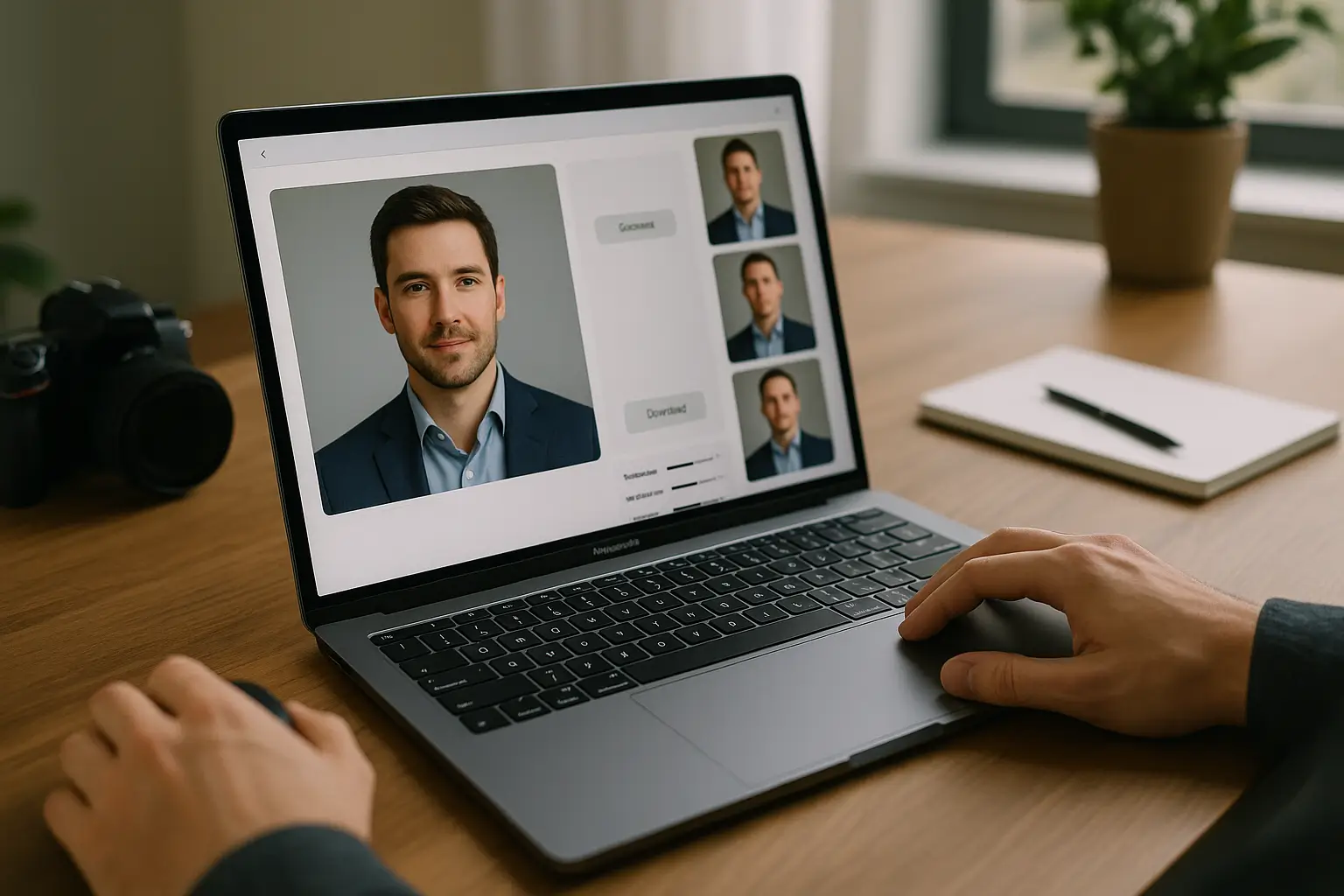
For the final pass, use a light-touch polish to finish strong:
- Spot-fix artifacts only: clear stray pixels, correct eyewear geometry, and even out distracting shine.
- Crop to a head-and-shoulders frame that leaves a touch of space above the head; export 400–800 px square for LinkedIn clarity.
- Balance color gently; keep skin tones natural and background subtle.
- A/B test two images for a week each—watch views, profile clicks, and message responses.
Quick case story: A freelance marketer tested two images—one with a slate background and blazer, one with a softer blue and a knit. The blazer image drove 22% more profile views and two new client inquiries in 10 days. Same person, same bio; different signal.
AI headshot tools for LinkedIn profiles: what to use when
Choosing an AI headshot generator or service comes down to your priorities: turnaround time, consistency, privacy, and how much control you want over the final look. There’s no magic button, but there are clear trade-offs.
Fully automated headshot apps vs. pro-assisted services
Fully automated apps generate dozens of looks quickly—great if you need something today. They’re cost-effective, ideal for job seekers or teams needing consistent staff photos. Pro-assisted services (either human-edited AI or traditional retouching on AI outputs) cost more but solve edge cases—glasses, curly hair, nuanced skin tones, or specific brand color needs. If your role is client-facing and high-stakes, consider the pro layer at least for the final picks.
Here’s a compact comparison to guide expectations:
| Approach | Quality Consistency | Speed | Privacy Control | Licensing/Usage | Typical Cost |
|---|---|---|---|---|---|
| Automated AI apps | Good with occasional artifacts | Minutes to hours | Varies by vendor; check data retention | Usually personal-use license; confirm commercial rights | Low |
| Pro-assisted AI services | Very good; human QC reduces artifacts | 24–72 hours | Often stronger policies; ask for data deletion on request | Clearer licensing; often includes commercial use | Medium |
| Traditional photographer | Excellent; true-to-life | Days to weeks | Strong; you control the files | Negotiated; typically broad usage | High |
Quality, speed, privacy, and licensing trade-offs
- Quality: If you wear glasses, have textured hair, or need a very specific brand background, pro-assisted services increase your odds of getting a clean result the first time. Automated tools excel when your inputs are strong and your needs are standard.
- Speed: Automated wins when you have an interview tomorrow. Pro-assisted still beats scheduling a studio.
- Privacy: Read the vendor’s policy. Look for clear statements on data retention and the option to delete your training photos and outputs. If you’re in healthcare, finance, or government, privacy may be the deciding factor.
- Licensing: Ensure you get commercial rights for use on your website, sales decks, and press kits. Many services allow this; some budget tools do not by default.
Action plan by use case:
- Job seekers: Choose a reputable automated app, feed strong selfies, and iterate quickly. Upgrade to light professional retouching for the final pick.
- SMB owners and founders: Use a pro-assisted service to align background and color with your brand guide, then standardize across the team.
- Freelancers: Generate 2–3 styles that fit your client segments (corporate, creative, tech). A/B test on LinkedIn and keep the winner for sales pages.
For hands-on help and a streamlined process, consider getting your headshot done via Headyshot’s service. Start here: Get your AI LinkedIn Headshots. It’s fast, privacy-conscious, and focused on believable, brand-aligned portraits.
If you want deeper background on why photos matter, browse LinkedIn’s own guidance on profile photo best practices and research on how quickly we form impressions from faces, such as the Princeton study summarized by APS.
In the end, the best AI portrait doesn’t look “AI.” It looks like you on a good day, in the right context, sending the right message. That’s the entire job description of a great profile photo.
